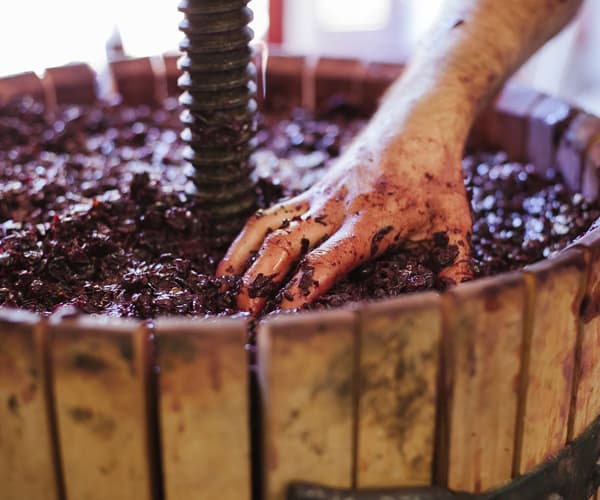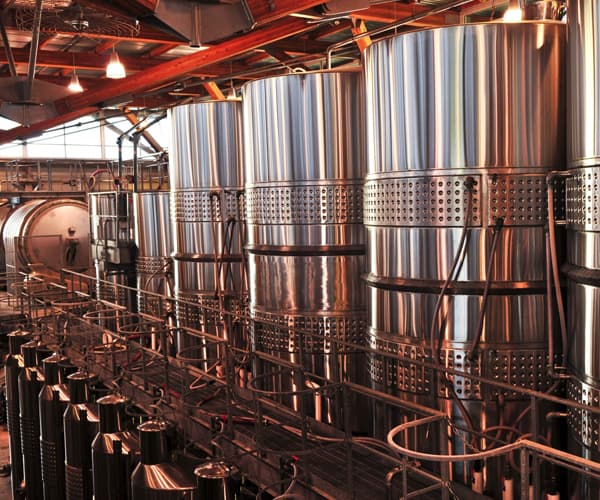Red wine is something that is enjoyed all around the world, however, what is not widely understood is how it is made. Red wine is made from dark-coloured grape varieties, though the flesh of these grapes is almost always and greenish-white, so the colour of the wine (and much of the flavour) comes from the skins. Once the grapes are picked they are brought to the winery, which is not always in the same place as the vineyard, in whole bunches or as individual berries. They are then crushed, either lightly or more heavily, depending on the winemaker’s preference to realise the juice. This mixture of the skins juice and seeds, which is called the must is placed in a vessel for fermentation. This vessel can either be of stainless steel, concrete, amphora (a clay pot) or a wooden barrel. Yeast, which naturally presents on the skins of the grapes or is added by the winemaker combines with sugar in the juice which is then converted into alcohol.
Some winemakers prefer to oversee this process carefully, employing a series of different methods such as chilling the must or adding sulphur dioxide. In natural winemaking, this happens without intervention. The red wine is then pressed. This is the process whereby the juice is extracted from the grape. This can be done by hand or which the aid of a wine press.


Then the wine is moved to a second vessel for ageing, again this can be of stainless steel or concrete tanks, oak barrels or amphora pots. Most red wine is aged for a less or greater period before bottling, the shortest being a few days as is the case with Beaujolais Nouveau to eighteen months or longer is the case with high-end Bordeaux red wines.
The wine then often undergoes one final process before bottling, fining and filtration. This is the addition of a fining agent, often egg whites or gelatine, to correct faults in the wine, such as excess tannin. This agent is then required to be filtered out, which removes any remaining yeast cells which may affect the bottled red wine. While this gives the wine clarity, it also affects the flavour, taking away from some of the natural expressions of the grapes. When making a natural red wine these processes are not used.


If you are interested in trying some red wines that are not filtered or finned and undergo no too little intervention in the cellar or the vineyard, Pure Wines has a selection totally natural wines from a variety of wine regions, some well-known for red wine, such as France and Italy, as well as other, more mysterious places, such as Slovakia or Hungary.
















